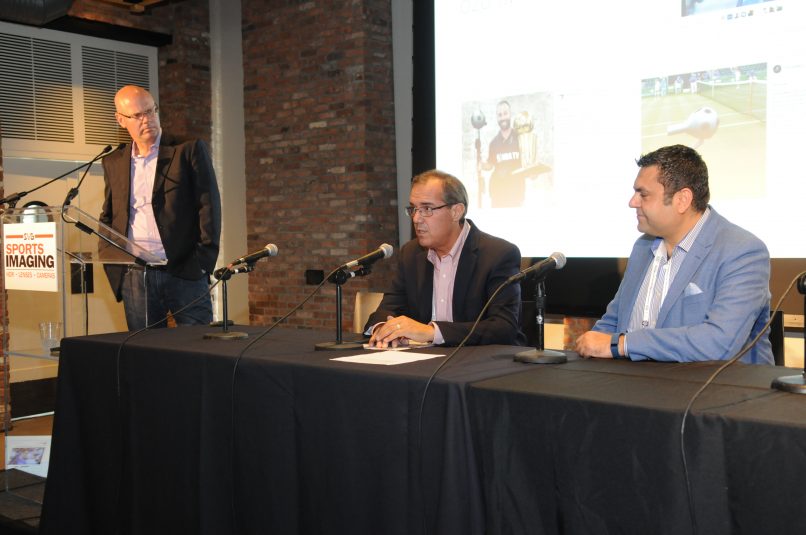Sports Imaging Forum: Complementary VR, With Broadcast Elements Fans Expect, May Be the Way To Go
Story Highlights
Virtual reality has become a favorite topic of conversation at industry gatherings and often raises the question of what, exactly, constitutes virtual reality. The nascent technology took center stage at SVG’s Sports Imaging Forum last month, when Nokia Technologies’ Tarif Sayed and Ivanhoe Media & Entertainment’s Glenn Adamo (formerly of the NFL) discussed VR: their definitions and perceptions, where they’ve found success, and what they believe the future holds.
“We hear the term VR every day, and we also hear the term 360, and I think there is some confusion that we, as an industry, are creating in consumer brains,” said Sayed, director, VR delivery and playback, Nokia. “There is the [desktop] experience, where, basically, you see a 360 photo or 360 video. It’s 2D, it’s panoramic, but that’s not VR.”

Ivanhoe’s Glenn Adamo (center) speaks as Nokia’s Tarif Sayed (right) and SVG’s Ken Kerschbaumer look on.
Another common definition, he continued, is that same 2D panoramic photo or video experienced on a mobile device within a headset. “Is it VR?” he asked. “No.” Virtual reality, according to Sayed, is an immersive viewing experience consisting of a 3D image or video that mimics the real-life experience by comprising left-eye and right-eye views, accompanied by 360-degree audio. This, he said, is exactly what Nokia’s Ozo virtual-reality device does: capture 360-degree video with 360-degree sound using eight 2Kx2K sensors and eight microphones.
Adamo, currently president of Ivanhoe Media & Entertainment, reflected on his recent tenure as NFL VP, production, broadcasting, NFL Films, NFL Network, and Media Operations, and the league’s efforts to explore and evaluate VR technology. After testing a handful of vendors, the league found that one vendor complemented the cinematic style of NFL Films, while another came closer to providing a live-broadcast experience. However, because neither could be encoded and delivered without at least a minimal delay, the league determined that the technology would not replace any of its live offerings. But the door is open for a product that could accompany the main broadcast.
“I think the next generation [of virtual reality] is doing this live and telling stories live,” said Adamo. “I don’t think this is a replacement, [which] broadcasters who are paying the NFL dollars would probably agree with. I don’t see this being a replacement for Fox NFL Sunday or Sunday Night Football on NBC. I do potentially see it as complementary.”
Sayed concurred: “No one wants to take the success of the main screen. Sports-content owners are making money from the HD broadcast, and they don’t want someone to take that. If VR will become complementary, then that’s a success story.”
But how, exactly, could virtual reality complement the main broadcast? Adamo recommended including elements from the main broadcast that viewers have come to expect from watching football.
“In order for this to be experiential, we have to see how you marry the VR stream with statistics, with interactive elements that you could really make this special, and I think we’re probably getting there,” he said. “We’re not there yet, because, candidly, sports leagues are going to be very careful about what they make available and what they allow, … but a lot of us see this as complementary to the streams.”
The panelists also touched on viewer fatigue, especially in watching video that approximates the main broadcast. For example, said Sayed, a Lakers fan might be interested in watching a game while sitting courtside next to Jack Nicholson on his headset for a few minutes but most likely would not choose to watch the entire game that way.
“We hear a lot about the concept of the ‘best seat in the house,’… but, after 10 minutes, [it wouldn’t work] for a viewer who’s been all their life used to the broadcast feed with slow motion, statistics,” he said. “They can’t really miss that. If … they need a closer look, then that seat is not enough. I think, from an emotional perspective, that seat is cool, but it can’t really cover all the game.”
